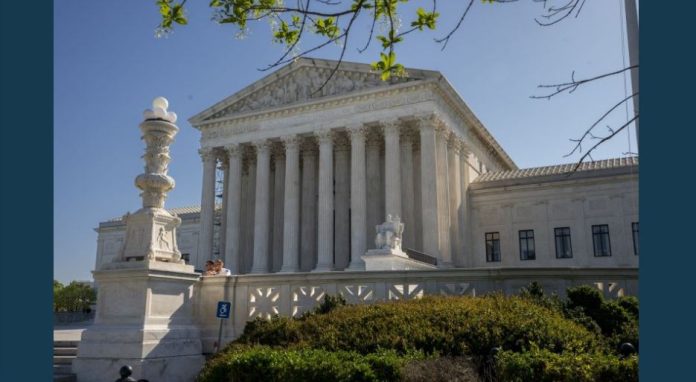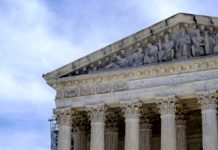
May 25 (UPI) — The U.S. Supreme Court Thursday significantly restricted the powers of the Environmental Protection agency to regulate and protect waters of the United States in wetlands under the Clean Water Act of 1972.
The ruling in Sackett vs. EPA was 5-4.
The ruling upends a Biden administration change to wetlands regulation that returned waterway protections to what they were in 2015 before the Trump administration weakened them.
The court held that, “The CWA extends to only those wetlands with a continuous surface connection to bodies that are ‘waters of the United States’ in their own right,” so that they are “indistinguishable” from those waters.
The court said the ruling “requires the party asserting jurisdiction over adjacent wetlands to establish “first, that the adjacent [body of water constitutes] … ‘water[s] of the United States,’ (i.e., a relatively permanent body of water connected to traditional interstate navigable waters); and second, that the wetland has a continuous surface connection with that water, making it difficult to determine where the ‘water’ ends and the ‘wetland’ begins.”
The Biden administration said Thursday that the court’s decision would take the country backwards.
“It puts our nation’s wetlands — and the rivers, streams, lakes, and ponds connected to them — at risk of pollution and destruction, jeopardizing the sources of clean water that millions of American families, farmers, and businesses rely on,” the White House said in a statement.
Congress could still strengthen wetlands regulation again through legislation, but that’s not likely with divided government. The ruling weakens the ability of the EPA to regulate wetlands developments by corporations, even though the case was brought by individuals.
The case was brought by Michael and Chantell Sackett, who bought land in Idaho and were cited by the EPA for violating the Clean Water Act when they backfilled wetlands to build a home.
The ruling significantly restricts the ability of the EPA to enforce clean water laws by restricting the agency’s regulatory authority over waters and wetlands.
The EPA supported a rule providing that adjacent wetlands are covered by the CWA if they “possess a significant nexus to “traditional navigable waters” and that wetlands are “adjacent” when they are “neighboring” to covered waters.”
But the Supreme Court ruled that the EPA’s interpretation “is inconsistent with the CWA’s text and structure and clashes with ‘background principles of construction’ that apply to the interpretation of the relevant provisions.”
The court’s ruling reverses a decision from United States Court of Appeals for the Ninth Circuit. It remands the case for “further proceedings consistent with this opinion.”
In the Supreme Court ruling the justices said the wetlands area in the United States is vast, covering a combined area greater than the surface area of California and Texas.





